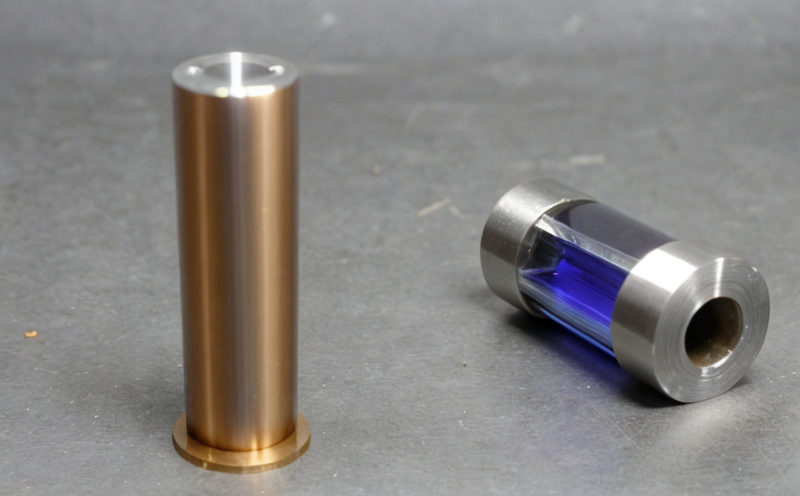Dimensional change evaluation of laminated fabrics
In the textile industry, dimensional stability is a critical factor that affects the performance and longevity of various products. Laminated fabrics are composite materials made by bonding two or more layers of fabric together with an adhesive to enhance durability, water resistance, and overall functionality. Evaluating the dimensional change of these laminated fabrics ensures product quality, compliance with industry standards, and customer satisfaction.
The process involves measuring changes in length, width, or thickness due to factors such as temperature, humidity, washing, drying, and ageing. Dimensional stability is particularly important for applications where fabrics undergo repetitive stress cycles, like garments, automotive interiors, and medical devices.
Understanding the dimensional behavior of laminated fabrics allows manufacturers to optimize their processes, improve product performance, and ensure compliance with international standards such as ISO 13934-1:2017 (Dimensional stability of textile materials - Part 1: General principles) and ASTM D695.
Our service specializes in evaluating the dimensional change of laminated fabrics using state-of-the-art equipment. This includes precision measurement tools like digital calipers, micrometers, and image analysis systems that provide accurate data on changes in size over time or under specific conditions.
We follow a rigorous methodology to ensure consistent results across all samples tested. Specimens are prepared according to industry best practices, ensuring uniformity for accurate measurements. The testing process includes conditioning the fabrics at controlled environmental conditions before subjecting them to various stressors like temperature cycles and washing simulations.
Our team of experienced engineers and technicians uses advanced instrumentation to capture precise data points throughout each test cycle. This information is then analyzed using statistical methods to determine compliance with specified tolerances.
The results from our dimensional change evaluations provide valuable insights into the performance characteristics of laminated fabrics under real-world conditions. These findings can be used by R&D teams to improve product design, optimize manufacturing processes, and enhance overall quality control measures.
By partnering with us for this service, you gain access to comprehensive reports detailing test procedures, observed changes in dimensions, and compliance status against relevant specifications. This data can help inform strategic decisions regarding material selection, process optimization, and product development efforts.
Why It Matters
Dimensional stability plays a crucial role in the success of many textile products. For instance, in garments, inconsistent shrinkage can lead to ill-fitting clothes that lose shape after washing. In automotive interiors, poor dimensional control could result in misaligned components or reduced durability over time.
- In medical devices: Ensuring proper fit and functionality
- Enhanced product reliability through consistent sizing
- Better customer satisfaction due to accurate sizing expectations
The ability to predict how fabrics will behave under different environmental conditions allows manufacturers to make informed decisions about material choices, production techniques, and finishing processes. By investing in dimensional change evaluations early in the design phase, companies can avoid costly rework later on.
Scope and Methodology
The scope of our dimensional change evaluation service includes testing various types of laminated fabrics used across different sectors. We focus primarily on weaves but also consider other construction methods when appropriate. Our methodology adheres strictly to internationally recognized standards, ensuring reliability and consistency in results.
| Test Parameter | Description |
|---|---|
| Initial Condition | Temperature, humidity, and other environmental factors are controlled to simulate real-world conditions. |
| Stress Application | Specimens undergo specified temperature cycles or washing simulations to evaluate dimensional change. |
| Data Collection | Precision measurement tools record changes in dimensions accurately. |
The testing process begins with specimen preparation, which involves cutting samples from the fabric according to standard guidelines. These specimens are then conditioned under prescribed environmental conditions before being subjected to stressors like temperature cycles or washing simulations.
Throughout the test cycle, our instrumentation captures detailed data points on any observed changes in dimensions. This information is analyzed using statistical methods to determine compliance with specified tolerances. Our reports provide comprehensive insights into the dimensional behavior of laminated fabrics under various conditions, enabling informed decision-making by stakeholders involved in product development and quality assurance.
Use Cases and Application Examples
- In garment manufacturing: Ensuring consistent fit across different sizes and materials.
- Automotive interiors: Guaranteeing proper alignment of components during assembly.
- Medical devices: Maintaining accurate sizing for patient comfort and safety.
- Garments: Preventing issues like puckering or stretching after washing.
- Automotive: Ensuring long-lasting performance in harsh environmental conditions.
- Medical: Enhancing reliability of devices used in critical applications.





